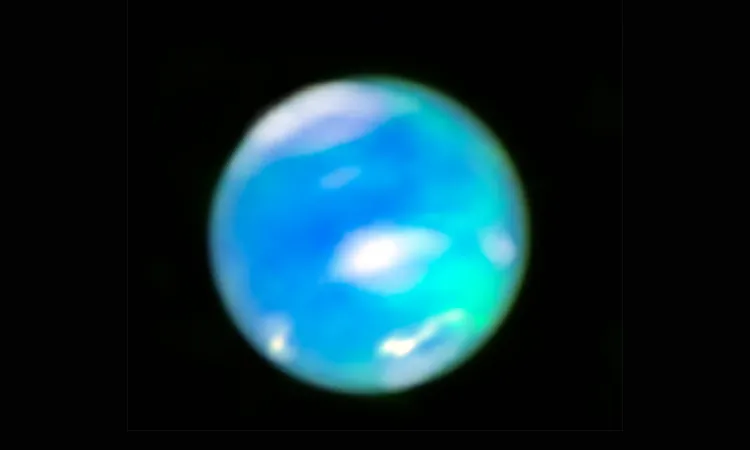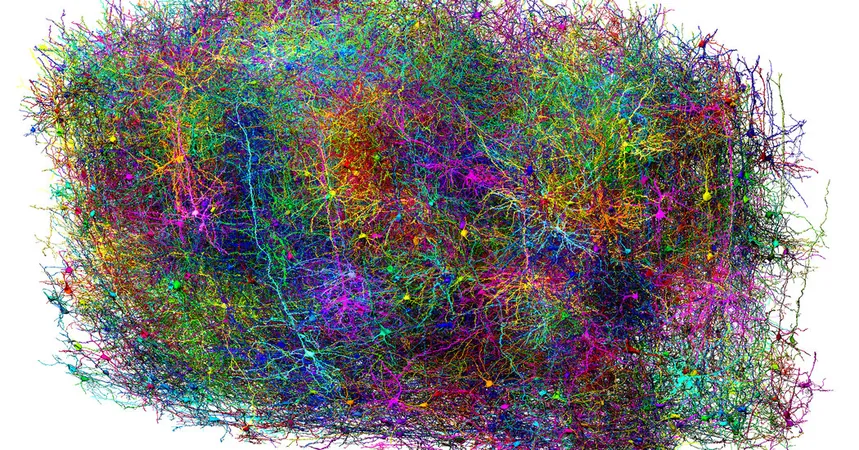
Stunning Discovery: Neptune's Auroras Finally Unmasked by James Webb Telescope!
2025-04-04
Author: Lok
Stunning Discovery of Neptune's Auroras
For the first time ever, astronomers have successfully captured spectacular images of auroras on Neptune, a feat made possible by NASA's James Webb Space Telescope (JWST). This discovery has transformed what was once speculation into a breathtaking reality, showcasing vibrant auroral activity lighting up the planet's upper atmosphere.
Data from the James Webb Space Telescope
The data transmitted from JWST reveals energetic particles colliding with Neptune's ionosphere, creating a strikingly luminous signature. These particles, primarily from the Sun, make their way along magnetic fields before interacting with Neptune's atmosphere, resulting in the brilliant emissions now visible in the telescope's near-infrared images.
Historical Context and Confirmation
While auroras on other gas giants like Jupiter, Saturn, and Uranus have been previously documented, Neptune's elusive lights remained hidden from view until now. The long-awaited confirmation of Neptune’s auroras aligns with findings made by NASA’s Voyager 2 during its historic 1989 flyby, which initially suggested their existence but failed to provide conclusive evidence.
Researchers' Reactions
Lead researcher Henrik Melin from Northumbria University expressed his astonishment at the clarity and detail of these auroras, noting, “It was so stunning to not only see the auroras but also to appreciate the detail and clarity of the signature.
Groundbreaking Techniques
In June 2023, the JWST utilized its Near-Infrared Spectrograph to capture these groundbreaking images. Astronomers simultaneously gathered spectral data to assess Neptune’s atmospheric temperature and chemical composition, unearthing a prominent emission line from H3+, a molecule produced during auroral activity. This distinctive cyan-colored glow showcased in JWST's images confirms the long-suspected presence of auroras on Neptune.
The Significance of H3+
H3+ serves as a key indicator of auroral activity in gas giants, which has been leveraged by scientists observing Jupiter, Saturn, and Uranus. Heidi Hammel, a Webb interdisciplinary scientist and leader of the Guaranteed Time Observation program from which the data was collected, stated, “H3+ has been a clear signifier of auroral activity. We always suspected it was there on Neptune, and with Webb, we finally have confirmation.”
Unique Auroral Patterns
Interestingly, Neptune presents a unique auroral pattern. Unlike the polar lights seen on Earth, Neptune's auroras are found in the planet's mid-latitudes due to its magnetic field’s significant tilt of 47 degrees off the rotation axis. This unusual alignment causes its auroral activity to appear more centrally on the planet, far from the poles as seen on Earth.
Cooling of Neptune's Atmosphere
The newfound insights from JWST also indicate that Neptune's upper atmosphere has cooled dramatically since the Voyager 2 flyby, showing temperature reductions of several hundred degrees. This cooling could explain why Neptune's light displays remained hidden from observers for so long, as cooler atmospheres generally result in subdued auroral brightness.
Future Research Directions
These revelations pave the way for an exciting new era of exploration into Neptune and other ice giants. Scientists are now planning extensive monitoring of Neptune through a complete solar cycle, lasting approximately 11 years. This prolonged study aims to shed light on Neptune's magnetic field and atmospheric fluctuations in light of solar activity.
Importance of Future Missions
Leigh Fletcher of Leicester University, a co-author of the study, emphasized the importance of infrared-sensitive instruments for future missions to Uranus and Neptune, suggesting that Webb has effectively opened a "window" onto the previously concealed aspects of these distant worlds. The findings from this monumental research have been published in *Nature Astronomy*, revealing new avenues for understanding the mysteries of our solar system's most distant planets.
Conclusion
This exciting development not only highlights the capabilities of the James Webb Space Telescope but also marks a significant milestone in our quest to explore and understand the outer reaches of our cosmic neighborhood. Buckle up, explorers—it looks like the universe has a lot more secrets to share!


 Brasil (PT)
Brasil (PT)
 Canada (EN)
Canada (EN)
 Chile (ES)
Chile (ES)
 Česko (CS)
Česko (CS)
 대한민국 (KO)
대한민국 (KO)
 España (ES)
España (ES)
 France (FR)
France (FR)
 Hong Kong (EN)
Hong Kong (EN)
 Italia (IT)
Italia (IT)
 日本 (JA)
日本 (JA)
 Magyarország (HU)
Magyarország (HU)
 Norge (NO)
Norge (NO)
 Polska (PL)
Polska (PL)
 Schweiz (DE)
Schweiz (DE)
 Singapore (EN)
Singapore (EN)
 Sverige (SV)
Sverige (SV)
 Suomi (FI)
Suomi (FI)
 Türkiye (TR)
Türkiye (TR)
 الإمارات العربية المتحدة (AR)
الإمارات العربية المتحدة (AR)